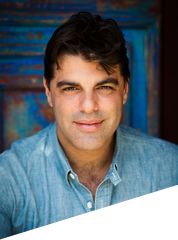The Economist magazine recently published the 2012 Big Mac Index, a quick and often quoted yardstick of purchasing power parity between currencies, first invented by the Economist in the mid 1980s and updated several times each year. The idea behind the Big Mac Index is that McDonalds’ flagship burger is the same basket of goods and services in all 116 countries in which it is sold – the same two all beef patties, special sauce, lettuce, cheese, pickles and onion on a sesame seed bun. (Except in India, where in deference to the sacred cows, it is two all chicken patties, but that is getting technical ….).
So, if a Big Mac is a Big Mac is a Big Mac, the theory is that in standardized currency terms it should cost the same, no matter where in the world you are eating it. That is, if the price of a Big Mac in Cape Town, say, is converted from South African rand to US dollars, it should cost the same as a Big Mac in San Francisco – after all, it is the same thing, isn’t it? Or in economic-speak, “in the long run, exchange rates should adjust to equalize the price of the same basket of goods and services in different countries”.
However, as any backpacker with dirt on his boots will tell you, a Big Mac in central Stockholm requires either a trust fund or a small bank loan, whereas one in downtown Beijing somehow does not. It is this differential that the Big Mac Index tracks – showing global Big Mac prices in standardized US dollar terms, the differences suggesting how much a particular place and its currency is under or over-valued.
The Big Mac Index is far from scientific, but it is pretty damn accurate. I can attest to this first hand, having visited Norway just before Christmas last year, which according to the Big Mac Index has the second most overvalued currency in the world (topped only by Switzerland). In Norway, a Big Mac will set you back a hefty US$6.81.
If only my run-in with the egregiously overvalued Norwegian Kroner had been limited to six bucks at the Golden Arches. Sadly, my personal lesson in the power of the Big Mac Index was much more painful, specifically, when my taxi from Oslo airport pulled into the drive of the hotel at which I was staying, and the meter said the fare was 1,200 Kroner. That is a mere US$220, or more than the flight from London to Oslo had cost. And, as the cab-driver cheerfully pointed out to me (Norwegian taxi drivers are, not surprisingly, an unusually cheerful bunch) the bill could have been much more except that there was a cap on the maximum Airport–Oslo taxi fare, so the meter had stopped ticking over at some point during the journey. Next time, I will use the rail option, a “steal” at only $30….
Now, what does the Big Mac Index have to do with hair salons and my five year old son?
First data point: I went to get my hair trimmed in Singapore last Friday. Haircuts in Singapore are not a case of snip-and-run. They always start you off with the most wonderful scalp massage, usually delivered by a young would-be stylist, followed by the application of hot towels to the back of your neck, and a brief neck and shoulder rub as well. Then a luxurious shampoo, maybe a bit more massage, and only after you are thoroughly tenderized will your selected stylist commence a slow cut of your hair. Quick is not something they do in Singapore’s hair salons – the whole experience is usually a two hour long sybaritic treat.
Second data point: while I was sitting in the hairdresser’s chair I leafed through the Economist, and that is where I read about the publication of this year’s Big Mac Index.
Third data point: Later that same evening, I flew to Melbourne to spend the weekend with my children. On the Saturday morning, I took my five year old son for a haircut. In complete contrast to Singapore, it appears that hairdressing in Australia has become a totally utilitarian affair. It was all about “how quick can I get your boy in and out of here?” A perfunctory hair wash, super fast scissors action, and like a fumbling teenager on a first date, it was all over in less than 20 minutes.
Following me yet? The same basket of goods and services – a simple men’s haircut – one in Singapore, one in Australia, with less than 24 hours separating the two. Yet a vastly different customer experience in each place.
So, in the same way that the Big Mac Index seeks to provide a quick and easy measure of relative purchasing power, I began wondering whether anyone measured relative customer service levels between countries. But despite my best research efforts, I have been unable to find anything of the sort.
So, I propose for your consideration the introduction of the Salon Standard, being a global comparator of customer service, based on the relative experience at hairdressing salons in different countries.
In this regard, I can speak with some authority. I travel widely for work, and I am frequently alone in unfamiliar places. One of the things I often do to kill time if I have the evening free is to get a haircut. Visiting a hair salon gets me out of the hotel room and gives me something to do where I don’t feel like a lone weirdo, as opposed to, say, dining by myself in a restaurant, or going to a movie solo. Plus, a hair salon is one of the few places in many less developed countries that peddle personal services but where you don’t need to worry about the staff offering to sleep with you for money.
As a result I can claim the somewhat dubious distinction of having had haircuts in over twenty countries, and I can attest to the power of the Salon Standard in accurately describing the service culture of any particular place.
Some examples:
Country: Czech Republic. Salon location: the tourist town of Cesky Crumlov. Customer Service Experience: Soviet. A matronly woman, I’d say mid-50s, wearing a flower print dress and white butcher’s apron, picked up some clippers and mercilessly sheared me, dispensing a Russian-army style buzz-cut without any sense of ceremony or style (or, for that matter, without any apparent formal training in hairdressing). It was all finished in less than ten minutes.
Country: United States. First salon location: Manhattan. Customer Service Experience: life-threatening. Being a naïve foreigner living in an Asian country where tipping isn’t expected, I did not know that I was meant to tip everyone even vaguely connected to my New York salon experience. And that means absolutely everyone, from the floor-sweeper to the hair-washer to the stylist. It was only later that I learned how heinous my crime was – to leave the salon, without having tipped! A friend told me that it was probably only my Australian accent that had saved me from receiving a pair of scissors between the shoulder blades as I walked out the door.
Country: United States. Second salon location: Hollywood. Customer Service Experience: Rock Star. Having learned my lesson in New York, I dished out the tipping dollars like there was no tomorrow. The service I experienced was obsequious beyond belief. Had I asked the stylist to parade down Rodeo Drive on a golden chariot, wearing nothing but a garland made of my freshly cut locks, I am eighty percent sure she would have done it. Actually, make that eighty-five percent sure.
Country: Japan. Salon location: Tokyo. Customer Service Experience: sublime, professional, humble. Standard Asian-style head massage, cups of green tea and delicate little cookies, and a perfect, if not slightly austere, cut. Profuse confusion and embarrassment at my Gaijin attempt to leave a tip. The hapless floor-sweeping girl actually chased me down the street to return the 100 yen note I had surreptitiously left on the counter after all overt attempts at tipping had failed.
Country: Israel. Salon location: Jerusalem (conflict disclosure: the salon in question was at the time owned by my aunt). Customer Service Experience: aggressive, pushy, “who the fuck do you think you are?” Even in an establishment where I was a relative of the proprietor, other customers had no qualms at all about pushing in ahead of me, and the stylist had no qualms stopping mid-cut to take phone calls on her mobile or chat with other salon staff. Tea and cookies – are you joking? The vibe was much more: “be grateful, you little weasel, that I am even willing to cut your hair today”. The whole experience wound me up so tightly it is a wonder I didn’t go completely gray then and there.
Country: China. Salon location: Shanghai. Customer Service Experience: nouveau riche. The salon was dripping in fake gold and gilded furnishings, red velvet drapes and imitation Rococo furniture. I was tended to by a small army of super-cool young Chinese staff dressed all in black, sporting multiple piercings and the most outrageously bouffant hairdos imaginable. The whole service credo felt a bit like: “we’re trying hard, but really, dude, our grandparents wore Mao suits, so we haven’t got a clue”. The haircut itself was super-expensive, but quality was very average, and like so many things made in China, I left the salon with a feeling that it wasn’t going to last for more than a few days.
I could continue, but you get the point: the Salon Standard provides an easy to grasp, highly intuitive account of what one can expect and what you need to know in terms of customer service, wherever you may go in the world.
It is so intuitive that even a child gets it. As we were leaving the salon in Melbourne, Rafi, my five year old son, turned to me and said: “I like living in Melbourne, Aba [Dad, in Hebrew], but the haircut sucks. I wanted the lady in Singapore who massages my head”.



